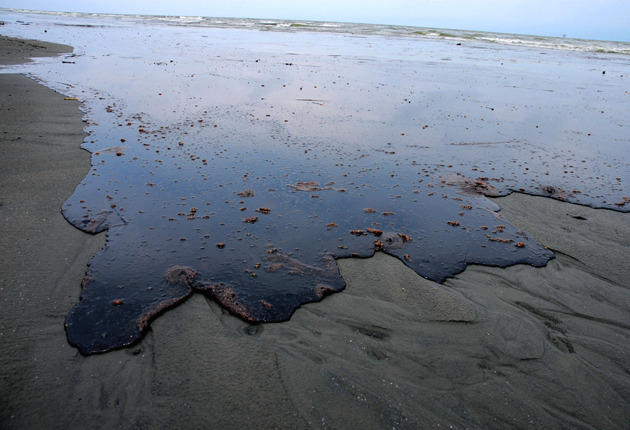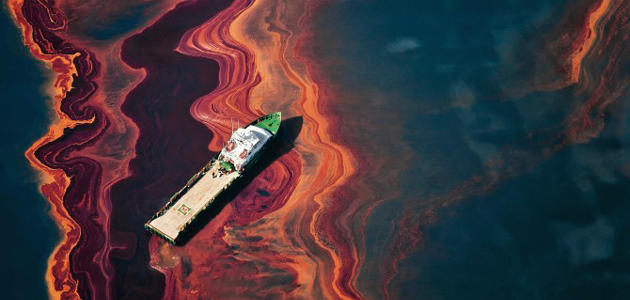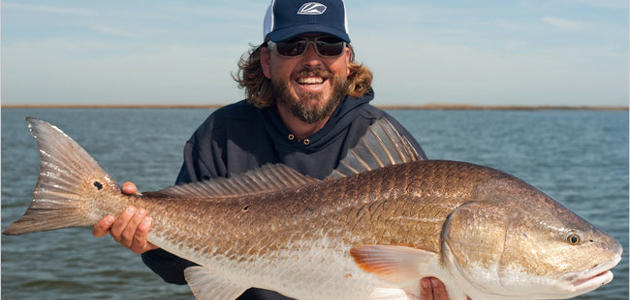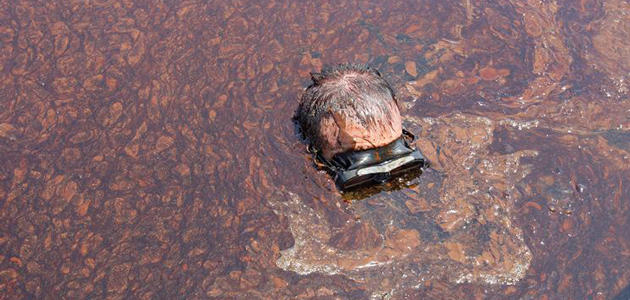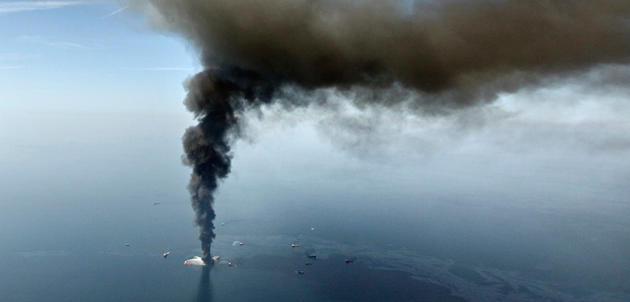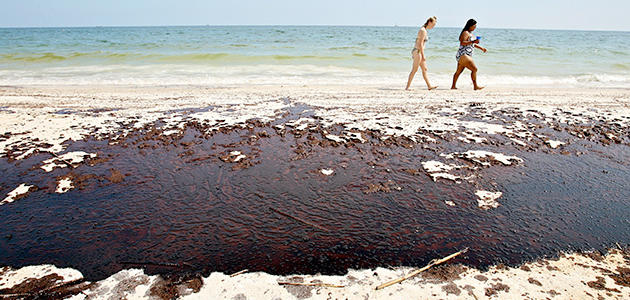This week marks the five-year anniversary of the BP Deepwater Horizon oil spill, which, over 87 days, spewed more than 200 million gallons of crude oil into the Gulf of Mexico.
The oil collected on beaches from Texas to Florida, compromising the livelihoods of communities along the coast and killing an untold number of marine life. It’s still difficult to determine its full effect, but Mother Jones speculates approximately 80,000 seabirds perished, which may throw off the food chain for years to come. Likewise, numerous reports note a decline in the health and reproduction rates of area aquatic life, such as tuna, shrimp, and seatrout.
We’ve combed through dozens of articles and commentaries about the spill and are excerpting, in chronological order, portions of six essential pieces. Click the images to read each in full.
A LIFE ON THE WATER, DRYING UP
Voices from the spill.
By Damien Cave.The New York Times, July 2010
Capt. Pete Lacombe has the cabernet nose of a man who spends too much time in the sun. He would prefer to be underwater, diving or showing tourists the wondrous coral reefs of the Florida Keys, but the oil spill in the Gulf of Mexico has largely kept him onshore. …
“I need 10 trips a week to make enough to survive,” says Captain Pete, as he is known. “Now I’m looking at none.”
THE GULF WAR
Were there any heroes in the BP oil disaster?
By Raffi Khatchadourian.The New Yorker, March 2011.
By the end of May, the oil was surfacing above the wellhead in countless pieces, which moved unpredictably through the Gulf. “We were dealing with hundreds of thousands of patches of oil,” Admiral Allen told me. “We didn’t have a large, monolithic spill.” One long patch slid around Plaquemines Parish, but then suddenly retracted without really hitting the shore. Responders at Houma called it the Devil’s Tail.
“The oil was very dynamic,” Laferriere recalled. “When you flew out to the source, what you saw was plumes—it was almost like a ballet of oil plumes coming up to the surface.”
A YEAR AFTER THE DEEPWATER HORIZON SPILL, A PERFECT DAY FOR A REDFISH
By Chris Santella. The New York Times, April 2011.
“I also believe that redfish habitat in other parts of the Gulf of Mexico has been damaged and that some of the displaced fish have come here. I have not personally seen any oil residue around these marshes, but I can’t say it’s not there. We just don’t know for sure. One thing that’s certain; the long-term effects of the spill have not played out.”
THREE YEARS AFTER BP OIL SPILL, USF RESEARCH FINDS MASSIVE DIE-OFF
By Craig Pittman.Tampa Bay Times, April 2013.
The diseased fish began turning up a few months after BP was able to shut off the flow of oil in July 2010. The discovery of fish with lesions faded out the following year, said Steve Murawski, a USF fisheries biologist who has overseen a project that examined 7,000 fish caught in the gulf. …
“If they get sick, that’s one thing,” Murawski said. “But if it changed their genes so that they’re less resistant to disease or have lower weights, that’s a big deal. That would be a real game-changer if true.”
BP DEEPWATER HORIZON FINE CAPPED AT $13.8 BILLION
By Terry Macalister. The Guardian, January 2015.
Judge Carl Barbier ruled late on Thursday in a New Orleans federal court that the Deepwater Horizon spill was 3.2m barrels, greater than the 2.4m barrels argued by BP but less than the 4.2m claimed by the US government. … The judge also said there was no question that BP lied about the amount of oil that flowed from the well. The company told government officials the figure was 5,000 barrels a day when internal documents showed that officials knew the amount was significantly higher than this.
WE DIDN’T LEARN ANYTHING FROM DEEPWATER HORIZON—AND WE’RE GOING TO PAY FOR IT
By Tim McDonnell. Mother Jones, April 2015.
But possibly even more outrageous than the spill itself is how little has been done by government to prevent a similar disaster. The oil and gas industry has stayed active in Washington, and managed to fend off serious efforts to curb drilling: Congress has passed zero new laws—not one—to restrict offshore drilling or force it to be safer. The Obama administration has approved over 1,500 offshore drilling permits since the spill. And back in January the administration announced a plan to open new areas in the Atlantic and Arctic for offshore drilling.
+++
Be sure to subscribe to our daily newsletter to get the latest from Sporting Classics straight to your inbox.
Cover image courtesy of “Thick Oil Washes Ashore” by Louisiana GOHSEP; Wikimedia Commons.

